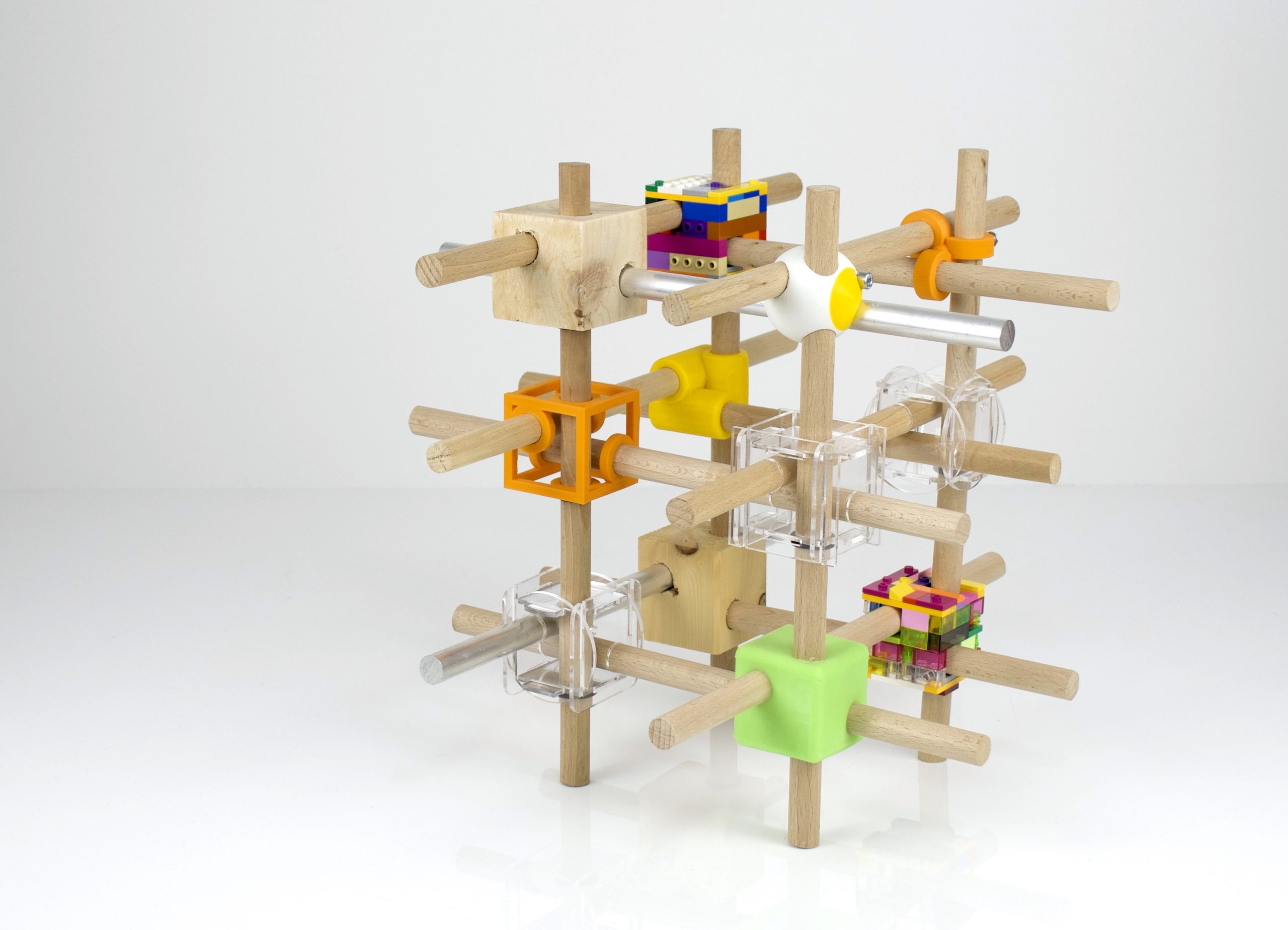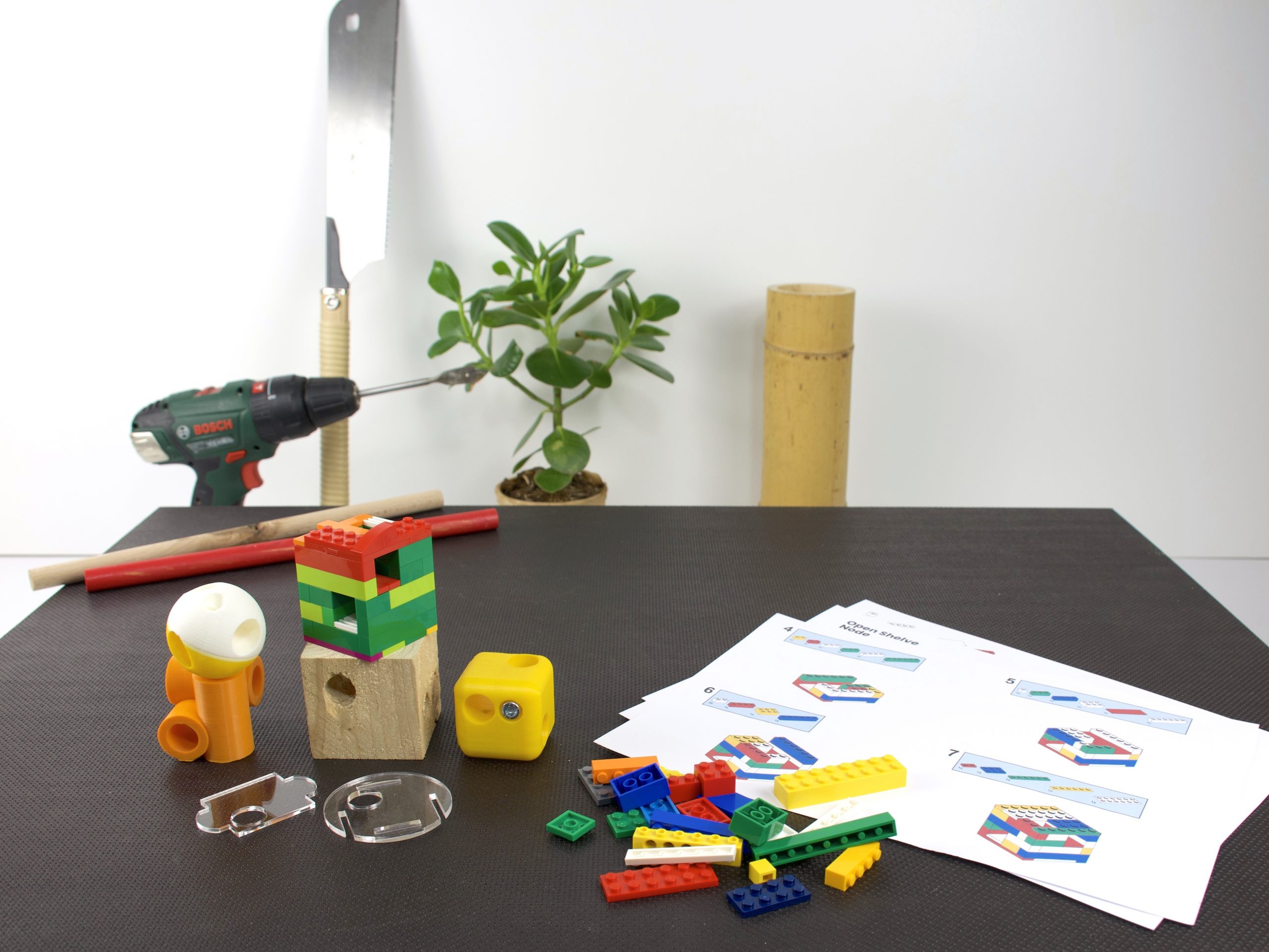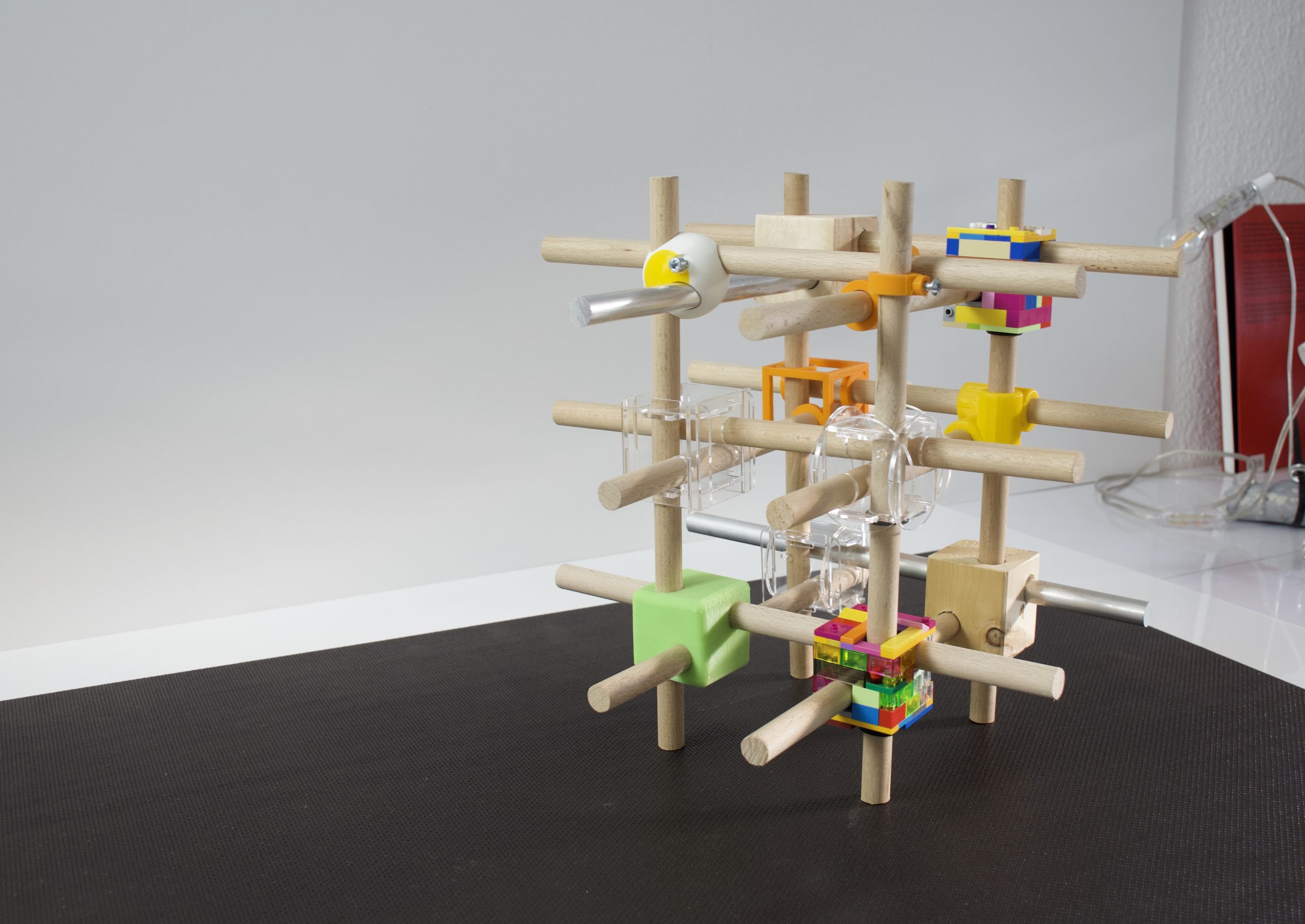Open Shelve Nodes

Useful information
- Team members
- Lars Zimmermann
- Country
- Germany
- Keywords
- open circular furniture shelves
Short Description
An open circular shelving solution to be manufactured with your local skills and materials.
Detailed Description
The Open Shelve Nodes is an open circular design by Mifactori. The strong basic system is pretty simple and can be executed in many different and combinable forms. Pick the materials, diameters and methods you like ? wood, 3d printing, LEGO bricks, silicone, acrylic, cardboard, concrete or (recycled plastic).
Production ready files and instructions are on the web.
The Open Shelve Nodes are modular, well documented, adaptable and “upcycling friendly”. They enable you to turn all kinds of local or left over parts and materials into flexible multiuse shelves. They aim for distributed manufacturing and circularity.
The open shelve nodes are open source an in continued development, vitally growing with its use.
Project Details
- Does your design take social and cultural challenges and human wellbeing into consideration?
It aims to make a contribution to a change in our design culture. Climate change, biodiverity collapse and resource depletion are problems caused by production – consumption and design. Open circular design tries to achieve more with less. It is also an attempt to pull the grimmest teeth of capitalism.
- Does your design support sustainable production, embodying circular or regenerative design practices?
I think there is already enough information about that in the main text.
But it is an open circular design. It checks 8 of the 9 boxes we connect to open circular design. It is simple, modular, open licensed, educative, upcycling friendly, based on standards, pre-use and supports recycling.
How we see Open Circular Design? Here is our article on that: https://mifactori.de/what-is-open-design/
- Does your design use principles of distribution and open source?
Yes. It is openly licensed, well documented and the design itself tries to support distributed manufacturing in the best possible way (we can think of).
- Does your design promote awareness of responsible design and consumption?
I think the answer is yes. For a couple of reasons.
Our studio also works on campaigns and activism. And our designs are part of this. Example for design activism: https://mifactori.de/self/
We explain our design methods of open circularity and our own designs are (almost aggressively) different. Describing and demanding change.
Our designs are educative. They aim to spread circular literacy and skills to work creatively and sustainably with the things around you.
Images


